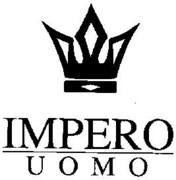Italy’s highest court has confirmed that even minor modifications or additions can be sufficient for a later trademark to avoid likelihood of confusion with an earlier trademark that is considered weak.
Background
On November 30 2017 the Supreme Court (28818/2017) affirmed an Italian Trademark Board of Appeal (ITBA) decision which confirmed an Italian Patent and Trademark Office (UIBM) decision rejecting an opposition filed by Imperial SpA against the trademark application for IMPERO UOMO. The opposition was based on Imperial’s word mark IMPERIAL. The contested trademark appears as follows:

Both the UIBM and the ITBA found no risk of confusion between the conflicting marks, noting that the prior mark IMPERIAL was weak and insufficiently distinct to be protected against trademarks using the same root (‘Imper’), especially when included in a complex mark.
Imperial based its appeal on two grounds.
First, it argued that both the UIBM and the ITBA had misapplied the IP Code insofar as they deemed IMPERIAL to be a weak mark. Imperial also asserted that the conflicting signs had been compared incorrectly. As the contested mark is a complex sign, Imperial argued that the ITBA should have assessed each of its individual elements in order to determine distinctive character. According to Imperial’s reasoning, because the comparison involved a simple mark and a complex sign, the ITBA should have identified the dominant element of the contested sign and then compared its similarity with the mark.
Second, Imperial argued that the ITBA erroneously identified the word ‘Uomo’ of the later sign as the dominant element without considering its weakness, since it directly describes the characteristics of the goods (ie, men’s clothing items).
Supreme Court Decision
The Supreme Court rejected both of Imperial’s grounds of appeal.
With respect to the first argument, the Supreme Court found the word ‘Imperial’ to be merely descriptive of the value and excellence of the clothing items and accessories designated by the mark.
Concerning the second ground, the Supreme Court did not fault the ITBA's conclusion that the word ‘Uomo’ was not a distinctive element of the challenged application. The court also agreed with the ITBA's reliance on case law, which held that the elements comprising a complex sign consist need not possess a high degree of distinctive character. On the contrary, case law holds that a complex sign may be considered, either separately or as a whole, devoid of distinctive character with the only consequence being that it will be considered weak.
With respect to the contested sign, the Supreme Court found that its distinctive character derived from the combination of its verbal elements, which were considered sufficient to dilute the inherent weakness of the prior mark and result in a new formation with its own original, distinctive character.
According to the Supreme Court’s reasoning, the ITBA’s decision was consistent with case law in this area, which holds that a complex sign that reproduces the only element constituting a prior sign can infringe, even where the complex sign includes other elements.
However, the Supreme Court indicated that this principle could not be applied in this case because it requires the prior mark to be sufficiently strong and distinctive, such that it is immediately recognisable as an independent element within a complex sign.
The court concluded that this condition was not met in this case – due to its weak distinctive character, the incorporation of the prior mark in the contested complex sign caused a substantial change in its meaning.
Imperial’s appeal was rejected.
Comment
This decision confirms the legal principle that likelihood of confusion is generally excluded between a weak prior sign and a new complex sign containing only slight and minor variations or additions.
However, the grounds on which the Supreme Court dismissed the appeal and confirmed the decisions of the UIBM and the ITBA raise some concerns.
The reasons for rejecting the second basis of appeal seem questionable as the later mark was considered sufficiently dissimilar from the prior mark only because of the presence of the word ‘Uomo’. The same dominant – but not necessarily strong and distinctive – element of the contested sign was considered sufficient to differentiate the marks. Thus, although the differentiating element was not strong, it was found to be sufficient.
To support its conclusion, the Supreme Court reasoned that the word ‘Uomo’ strengthens the connection between the domain of an emperor and male fashion, thus defining the stylistic field of the contested sign. Therefore, the descriptive capacity of the word ‘Uomo’ does not exclude the originality and distinctiveness of the complex contested sign, which then dilutes the prior and weak mark.
The primary concern is whether the UIBM, ITBA and Supreme Court gave sufficient recognition to a word that the average Italian consumer would likely perceive as a clear indication of the destination of the goods (ie, the male public).
As a result, the conclusion that no likelihood of confusion existed between the word mark IMPERIAL and the complex sign IMPERO UOMO appears to be based on insufficient grounds because:
-
the descriptive word ‘Uomo’ was given too much importance; and
-
the earlier mark should not have been considered weak.
It should not have been assumed that ‘Imperial’ is perceived as descriptive of the value and excellence of corresponding clothing items.




